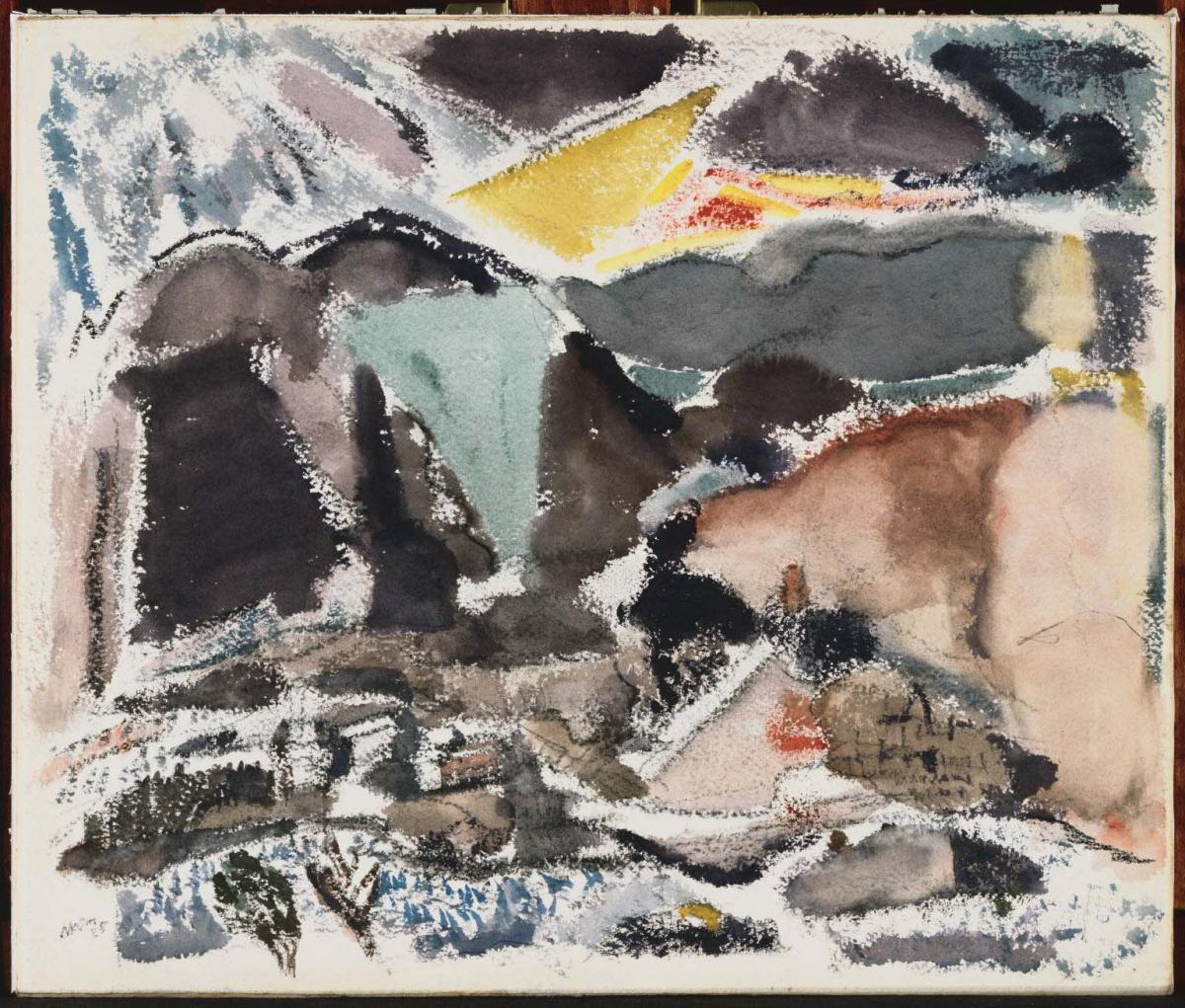Back of Bear Mountain
John Marin ( 1925 )

In 1925, John Marin was painting some of his most monumental and expressionistic landscapes. He had found a way to convey his sentiments about nature through the medium of paint. Back of Bear Mountain is a prime example of Marin’s great achievement. He was painting to express emotion long before the Abstract Expressionists championed this cause. Sheldon Reich, Marin’s biographer, estimates that the broadly painted forms, the textured, almost gestural brushstrokes, and the strong linear contours of the painting “do not give up form of expression…[but] sublimate one for the other to achieve an expression carefully formed.” During the 1920s, Marin’s work became more graphic and structured, as evidenced in Back of Bear Mountain with its clear organization, calligraphic line, and large planes of pure, intense colors. The energy and warmth of the sun are evoked by the golden-yellow lines that radiate down from the hot sphere in the upper left.
Marin was seriously ill in 1925 and while recuperating made four weekend trips to visit his cousins, Lyda and Retta Currey, who were summering in the Berkshires in Massachusetts. It was during one of his trips north that Marin paused in the Hudson River Valley in New York to paint six watercolors, three in Haverstraw and three at Bear Mountain, including Back of Bear Mountain and Hudson River Near Bear Mountain, 1925, also in the Phillips’s collection.
When Marin exhibited these watercolors in December of the following year at the Intimate Gallery, they were well received by critics, one of whom wrote that Marin “had nearly arrived at the expression he seeks” and that he was “more able to grasp his subject, analyze it, and transpose its essence with added richness.” When Phillips visited the exhibition he was enthralled, later stating that he had “been drinking deep of their exhilarating [sic] beauty and vitality.”